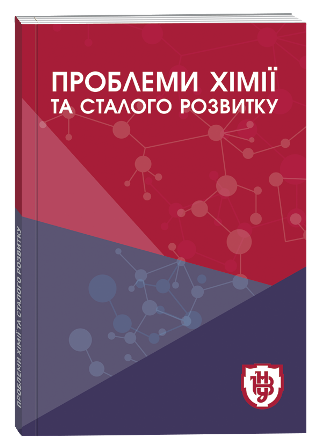ACCUMULATION OF HEAVY METALS IN BOTTOM SEDIMENTS
DOI:
https://doi.org/10.32782/pcsd-2021-2-1Keywords:
sediment, heavy metals, accumulationAbstract
Bottom sediments serve as an acumulation of the total amount of heavy metals in the aquatic ecosystems of small rivers, which, unlike the non-point bodies of water, are characterized by the dynamism and active interaction of the “water-bottom sediments” system. The results of the determination of heavy metals in sediments of a small river typical of the Poles zone of Ukraine are given in the article. In the studies, increases in heavy metal concentrations were more pronounced at sites where sediments were rich in organic matter and the water itself was exposed to external anthropogenic effects. The need to assess the state of aquatic ecosystems according to the qualitative characteristics of sediments has been proven. At the time of the study, sediments were the most zinc-containing sediments, while manganese concentrations dominated the water. According to the theory of molecular diffusion, the compounds with the smallest molecular mass have the greatest potential for exchange. The correlation of heavy metals in sediments and in the water of the study river gave approximations of 0.55 at point 1; 0.74 at point 2; 0.40 at point 3. This suggests that the most significant depositions of heavy metals are sediments that are rich in organic matter and subject to active allochthonous effects. By numerical expression, the elements in decreasing order of concentration in sediment were in series: Zn> Mn> Cu> As> Pb> Cd> Co; in river water: Mn> Zn> Cu> As> Pb> Cd> Co. Therefore, Accumulation patterns are also influenced by complexities in the exchange of heavy metal compounds between sediment and water and a number of allochthonous factors. Given the potential of aquatic ecosystems for secondary (self-polluting) pollution by various substances, including metal compounds, from sediments. It concluded that the state of aquatic ecosystems should be assessed according to the qualitative characteristics of sediments.
References
Романенко В.Д. Основи гідроекології: Підручник. Київ : Обереги, 2001. 728 с.
Відновна гідроекологія порушених річкових та озерних систем (гідрохімія, гідробіологія, гідрологія, управління). Том I. Гриб Й.В., Клименко М.О., Сондак В.В. Рівне : Волинські обереги. 1999. 348 с.
Брукс Р.Р. Загрязнение микроэлементами и химия окружающей среды. Москва : Химия, 1982, с. 371–413.
Хвесик М.А., Рижова К.І. Рибне господарство України (еколого-економічний аспект). Київ : РВПС України НАН України, 2004. 53 с.
Экологическое состояние реки Днестр / Л.В. Шевцова, К.А. Алиев, О.А. Кузько и др. Київ: Редакция «Гидробиологический журнал», 1998. 148 с.
Линник П.Н. Донные отложения водоемов как потенциальный источник вторичного загрязнения водной среды соединениями тяжелых металлов Гидробиологический журнал. 1999. 35, № 1. с. 32–42.
Перевозников М.А., Богданова Е.А. Тяжелые металлы в пресноводных екосистемах. Санкт-Петербург. 1999. 228 с.
Клименко М.О., Бєдункова О.О. Міграція важких металів у ланцюгах живлення водних екосистем. Зб. наук. праць «Вісник національного університету водного господарства та природокористування». Вип. 2(34). Ч. 1. Рівне, 2006. C. 13–20.
Методы гидробиологического анализа пресных вод. Ленинград, 1976, с. 14–23.
Якість води. Відбирання проб. Частина 2. Настанови щодо методів відбирання проб (ІSO 5667-2:1991, ІDT). 11 с.
Линник Н.М. Влияние фульвокислот на миграцию металлов в системе «донные отложения – вода». Гидробиологический журнал. Том 43, № 6, 2007. С. 93–110.







